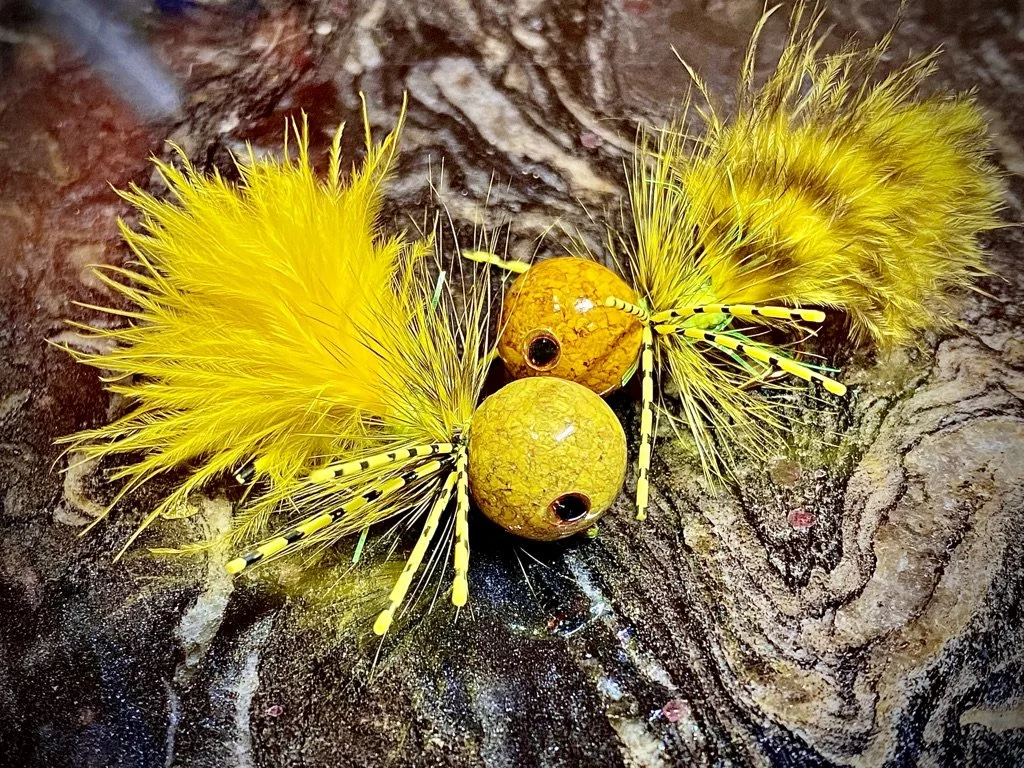Melon Head Frog version of. Round Dinny popper
Instructions for the Round Dinny Popper
1. The first step is to take a small slice of cork off of one side on the cork sphere. This will serve as the bottom of the popper. This flat surface will provide more room for the hook gap, making the popper more effective at hooking fish
2. Next, you will need to cut a groove for the hook. If you have access to a fine saw that can be used but i usually use a single edge razor or an exacto knife. Make sure the cut is centered in the flattened area you created with your first cut. This cut should be about an eight of an inch deep.
3. Mount the Mustad popper hook in your vise and coat the area the width of the popper with thread, whip finish and cut off.
4. Coat the thread wraps with super glue and push it into the slit you created in the bottom of the popper. You may find it easier to remove the hook from the vise place the cork sphere slit side up on a firm surface and push the hook into the slit.
5. Once in place pinch the edges of the cork around the hook and allow the glue to set up. If needed add a little more glue into the slit after inserting the hook.
6. You are now ready to color your popper body. Use paint or permanent markers to add the desired color to the body.
7. After coloring the body you may add eyes (either painted or stick on)
8. I prefer to give the popper a protective high gloss finish. There are many UV resins on the market that are easy to apply and cure quickly.
9. Some resins will cause the colors of permanent markers to run. If you want to avoid this you can coat the popper with Loon Soft Head Finish before applying the UV resin. This will prevent the colors from running. Note that the Loon Soft Head finish goes on a milky white but will dry perfectly clear. When the Loon Soft Head is dry you can coat the popper with UV resin and cure with a UV light. Be sure the resin is evenly distributed before curing to avoid bulges and drips.
10. The final step is to add your tail dressings of choice. Options include marabou, bucktail, calf tail, saddle hackle etc, Cover the thread wraps that secured your tailing material with a palmered hackle and your ready to whip finish and cut off your thread. If you like you could also add rubber legs through the body or tied into the tail assembly for added movement on the water.
Materials List For The Melon Head Frog (pictured at top of page)
Thread: Semperfli Classic Waxed 6/0
Body: Semperfli Ice Straggle Chenille - fluoro green
Hackle: Chartreuse Grizzly
Legs: Round Rubber or Silicon
Eyes: 4mm Dragon Eyes
Coloration: Permanent markers
Finish: Solarez UV Resin

